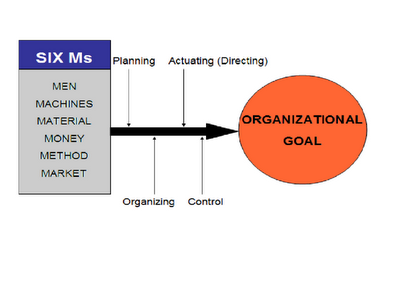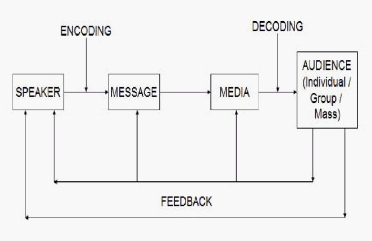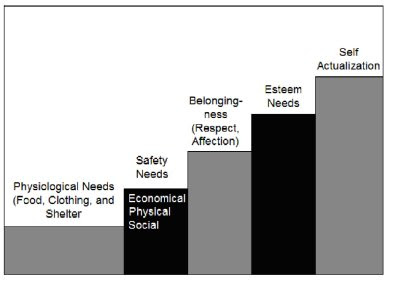"FILING IS THE WAY OF KEEPING RECORDS."
Filing is one of the activities in the record management program that involves systematically classifying, coding, arranging and placing of records in storage. It is the proper arrangement, sorting and availability of records.
The process of filing has been defined variously by different authors.
"Filing is one of the activities in record management prgram which involves systematically classifying, coding, arranging, and placing of records in storage."
-Zene K. Quible
"Filing is the process of so arranging and sorting original records, or copies of them, that they can be readily located when required."
-Leffingwell
"Filing is the systematic arrangement and keeping of business correspondence and records so that they may be found and delivered when needed for future reference."
-Neuner and Keeling
"Filing is the placing of documents and papers in acceptable containers according to some predefined arrangement so that any of these when required, may be located quickly and conveniently."
-George R. Terry
For more details log on to
http://sbinfocanada.about.com/cs/management/qt/filingsystemjc.htm
http://www.mindtools.com/pages/article/newHTE_85.htm
Objectives of filing :
Following are the main objectives of filing :
- Protection
- Witness
- Reference
- Follow-up values
Protection :
Filing enables the records to be protected from insects and the weather, as well as from being mishandled, misplaced, ruined, or stolen. A filing system is considered good that keeps the records safely for a number of years and the records are produced in presentable condition whenever required.
Witness :
Filing is done so that the safely kept records can be presented as witness whenever any legal action is to be taken up.
Reference :
"With the help of old references new tasks can be performed better."
The references are generally taken from the past stored records to perform better in the present scenario. Hence, records are to be kept safely for future use thus making filing a necessary part of office management.
Follow-up values :
Sometimes old records ate proved to be valuable to take up the follow-up actions. Therefore, filing of records is necessary so that they can be produces whenever required at those times.
Functions of filing :
Following are the type of functions of a filing system :
- Library functions (issuing, collecting, recording, storing and, sorting)
- Administrative function
- Information functions (maintaining, protecting, and supplying)
- Historical function
Library functions :
In a library, the books are collected, sorted, stored, and issued as well as their details are recorded. Similarly, in the process of filing the records are collected, sorted, stored safely, and protected as well as their particulars are recorded. The same are produced at the time of requirement.
Administrative function :
To control and enhance the proper functioning of an organization or establishment the past records are naturally required. At that time the files are taken and opened to find those records. So filing helps in controlling hence, is an administrative function.
Information function :
To prevent malfunctioning in present, past records and information are certainly required. The filing system helps to maintain those records, protects them form any type of damaging elements be it insects, wasps, weather or thief and produce the same whenever the need arises.
Historical function :
The filing system stores and protects the past records efficiently to supply the same in present and future periods of requirement.
Advantages of filing :
Following are the main advantages of filing :
- Ease in sorting
- Supportive to planning
- Ease in replying
- Helpful in quick decision making
- Helps in correspondence
- Useful while repeating the orders
- Provides better control mechanism
- Produced as evidence
- Increases efficiency
Ease in sorting :
The filing system makes the sorting of records much easier. This is so because filing classifies the area of different subject matters and hence acquiring any record related to a particular matter becomes easy.
Supportive to planning :
While framing new plans the past records are ever brought into consideration to make new plans much more effective. Filing provides the ease of getting the past records and thus supports in making effective and efficient plans.
Ease in replying :
Filing system provides the whole-sole and systematic information of each and every matter related to the organization. The information are in the form of stored records. This enables ease in replying to letters, enquiries, invitations and others.
Helpful in quick decision making :
Any decision can be taken quickly and efficiently if all the information related to the matter is collected and presented whenever required. The same is done by the filing system ensuring quick decision making.
Helps in correspondence :
Filing system maintains and supplies the records that are required as references while giving correspondence.
Useful while repeating the orders :
The number of orders given, for what were those given, how much material is obtained, how much is left, who used the material and for what purpose etc. These are some of the questions that come in mind while passing a new order but these data cannot stay for too long in human mind.
Filing system, thus, proves to be very helpful in getting the answers to such questions.
Filing system, thus, proves to be very helpful in getting the answers to such questions.
Provides better control mechanism :
For any manager it is necessary to have knowledge about the establishment so that he could have better control on the subordinates and the workers. He needs to open old records to seek the information and filing is helpful in such an act.
Produced as evidence :
Whenever there arise doubts, confusions, misunderstandings, or any illegal action is performed these files are necessarily produced as witness or evidence.
Increases efficiency :
When the records are obtained on time, decisions are made quickly and efficiently, sorting of records is done easily and so on, then the efficiency to perform the other related tasks itself increases too.
Essential features of ideal filing system :
The following are the essential features of an ideal filing system :
- Simplicity
- Compactness
- Economical
- Safety
- Elasticity
- Cross-reference
- Classification
- Indexing
Simplicity :
The filing system should be so simple and clear that there does not arise any complexity or confusion rather required file for necessary records could be attained with ease.
Compactness :
The filing system should be such that it occupies minimum required space. The filing system should be compact.
Example :
A filing system that occupies a rack only is much more better than the file system that occupies a whole room.
Economical :
The filing system should be such not be such that its equipments could not be afforded after a period of time. A filing system should be economical enough so that the organization can afford its charges.
Example :
It is not necessary to have lockers but the lock almirahs made up of steel could do.
Safety :
The safety of important documents is one of the requirements of any office of an organization. Along with the easy availability of files, safety is a major issue to avoid mishandling of most important documents.
Elasticity :
The filing system should not be too stuffed. The files have a limit to keep in the papers. So the files of enough thickness should be made so that it does not have to be changed after keeping 10 to 20 papers. At least the space of 100 to 200 papers should be there.
Cross-reference :
The filing system should be such that all the documents related to a particular subject can be gathered all together at the time of any requirement.
Classification :
Filing system should be first classified on major level i.e. area wise and thereafter on minor level so that problems, confusions or doubts do not arise while finding any particular record.
Indexing :
Whole filing system is useless without proper indexing. Indexing enables to find the required file more promptly and easily.
Planning the filing system :
Filing system should be planned with due regard to the objectives of filing and the nature of the records.
The planning of filing system can be done in the following manner :
- Preparing a list of letters
- Method of storing
- Use and availability
- System of classification
- Centralization and decentralization
- Users
- Filing equipments
Preparing a list of letters :
The very first step of planning of the filing system is sorting of documents on the basis of subject and then in the basis of priority. Thereafter, listing of documents of different subjects should be done to avoid misplacement of documents.
Method of storing :
The method of sorting the documents should be such that the files containing usual letters i.e. used frequently are kept in the near by reach but the files containing casual letter i.e. used occasionally and are confidential should be kept away from the place where everybody can reach easily.
Use and availability :
The management of the files should be such that those files which are frequently or daily used are made available as early as possible to avoid wastage of time. The files those are used monthly or annually can be kept at the place where the files of daily use are not kept.
System of classification :
The classification of the records can be done in many ways be it subject-wise, geographically, chronologically, numerically, alphabetically, alpha-numerically and so on. The most suitable and best method of classification should be opted to enable easy availability of the documents.
Example :
Letters of different companies from different areas can be classified geographically but those of different correspondents of same name can be classified numerically rather than alphabetically to avoid any sort of confusion.
Centralization vs. decentralization :
The files that are important, confidential and are of executive matters should be kept under the control of centralized office but the files related to different departments and are frequently or daily used should be kept under the control of decentralized office.
Users :
The filing system should be such that everyone cannot approach to get the file rather specification of a person should be done who only can be given the authority and responsibility of handling the files.
Filing equipments :
Equipments that are to be used in the filing system should suit the type and method of the filing system that is adopted by the office.
Example:
Where there is a need of hard board files the box files will not be of any use.
Filing organization :
- Centralized filing system
- Decentralized filing system
Centralized filing system :
When all the files of the organization are kept under the control of central office, it is known as the centralized filing system.
Advantages :
Following are the advantages of centralized filing system :
- Uniformity and standardization
- Cost effective
- Improvement
- Competent personnel
Uniformity and standardization :
All the letters going out of any organization should be standardized, i.e. should have a standard format, no matter whether it is written on the behalf of the office or on the behalf of any of the departments of the organization.
Cost effective:
Since there is only one office, the requirements are fulfilled once for all, therefore, the cost is less as comparative to that in decentralized filing system.
Example :
- Equipments required for the filing methods need to be purchased for once only.
- The number of clerks to be employed is less.
Improvement :
Since there is single on all, therefore, the task is performed efficiently and effectively. As a result of this there will be improvement in the organization.
Competent personnel :
A person for writing replies and correspondence can be employed but it is impossible incase of decentralized offices because employing a person for every department means paying to all differently, which will simply increase the cost.






